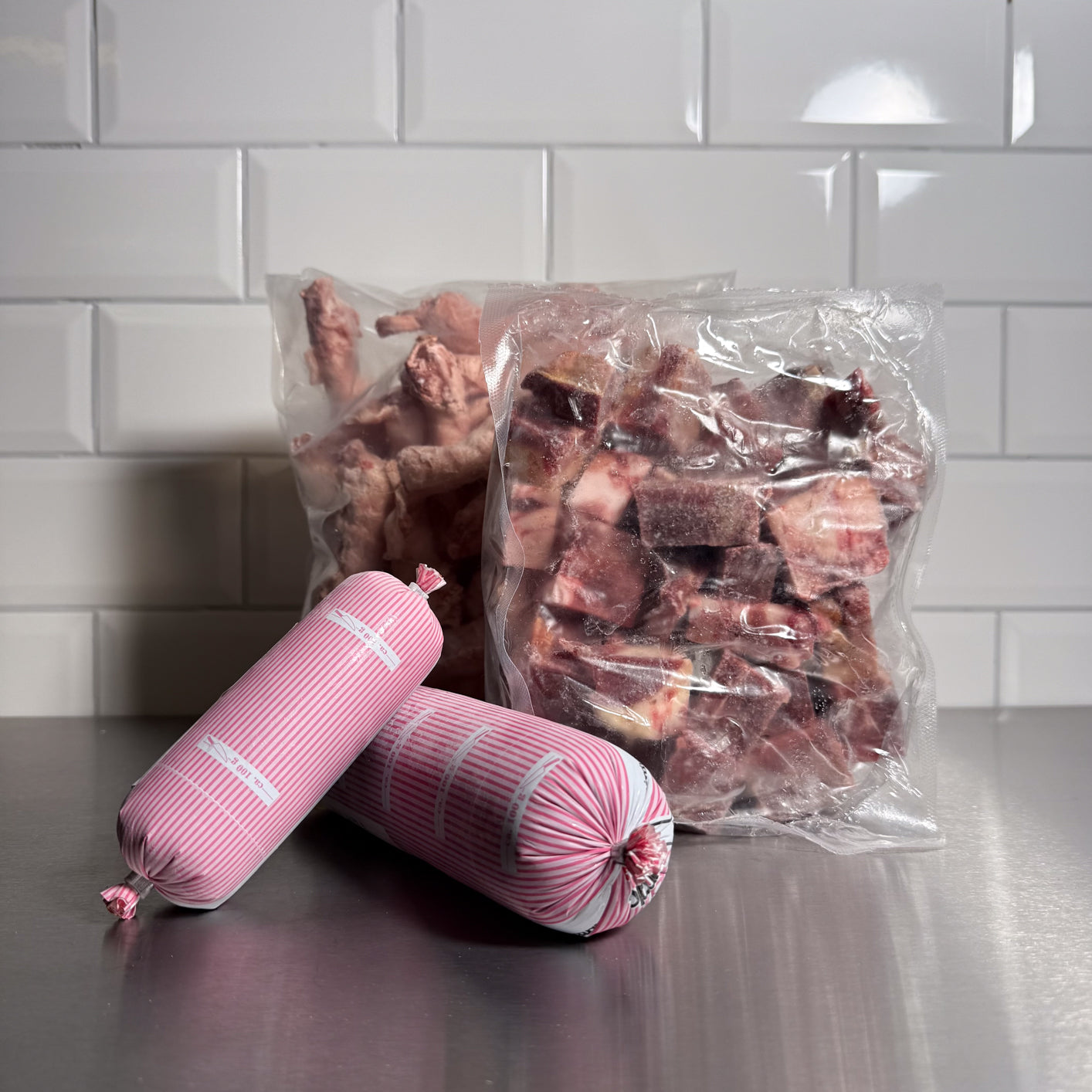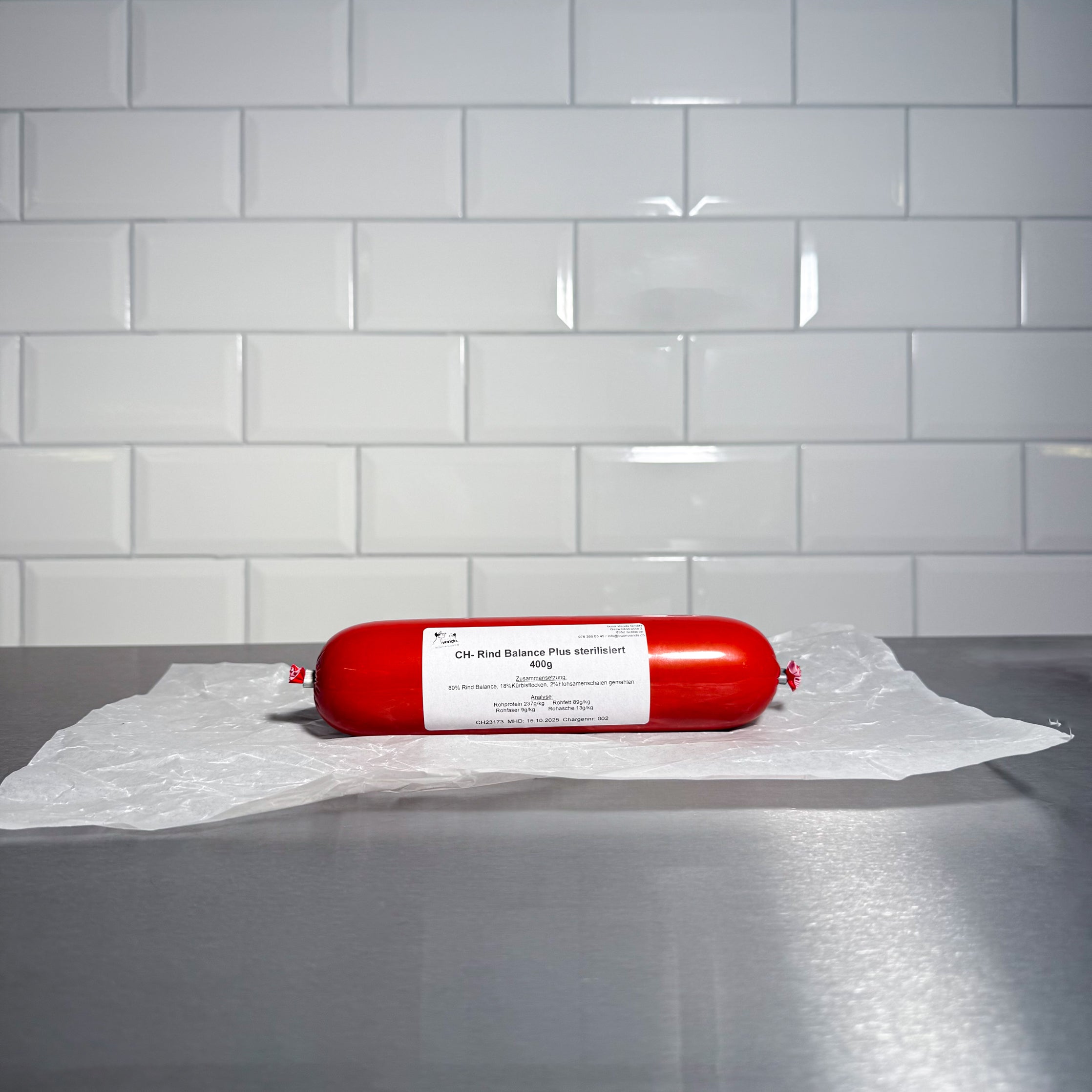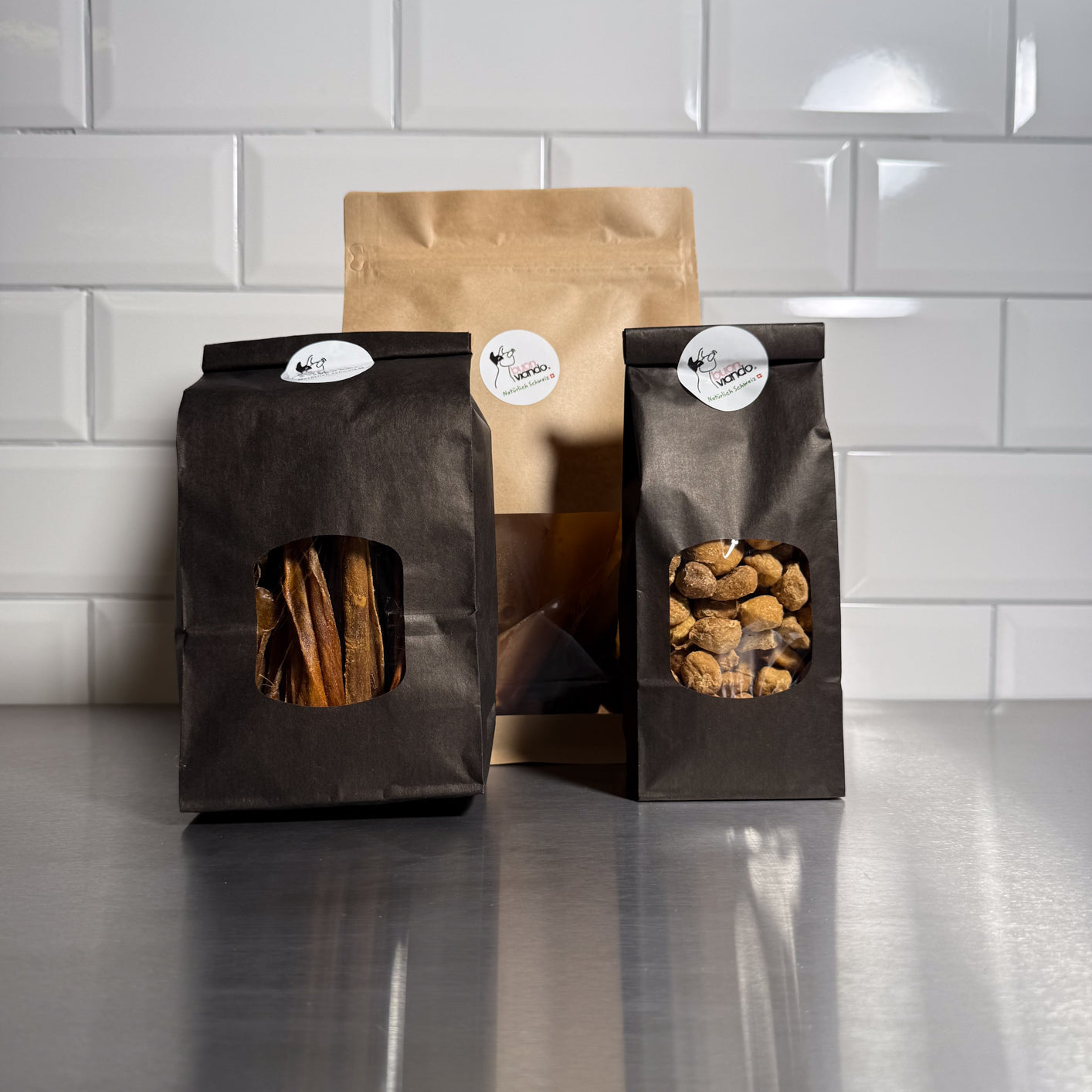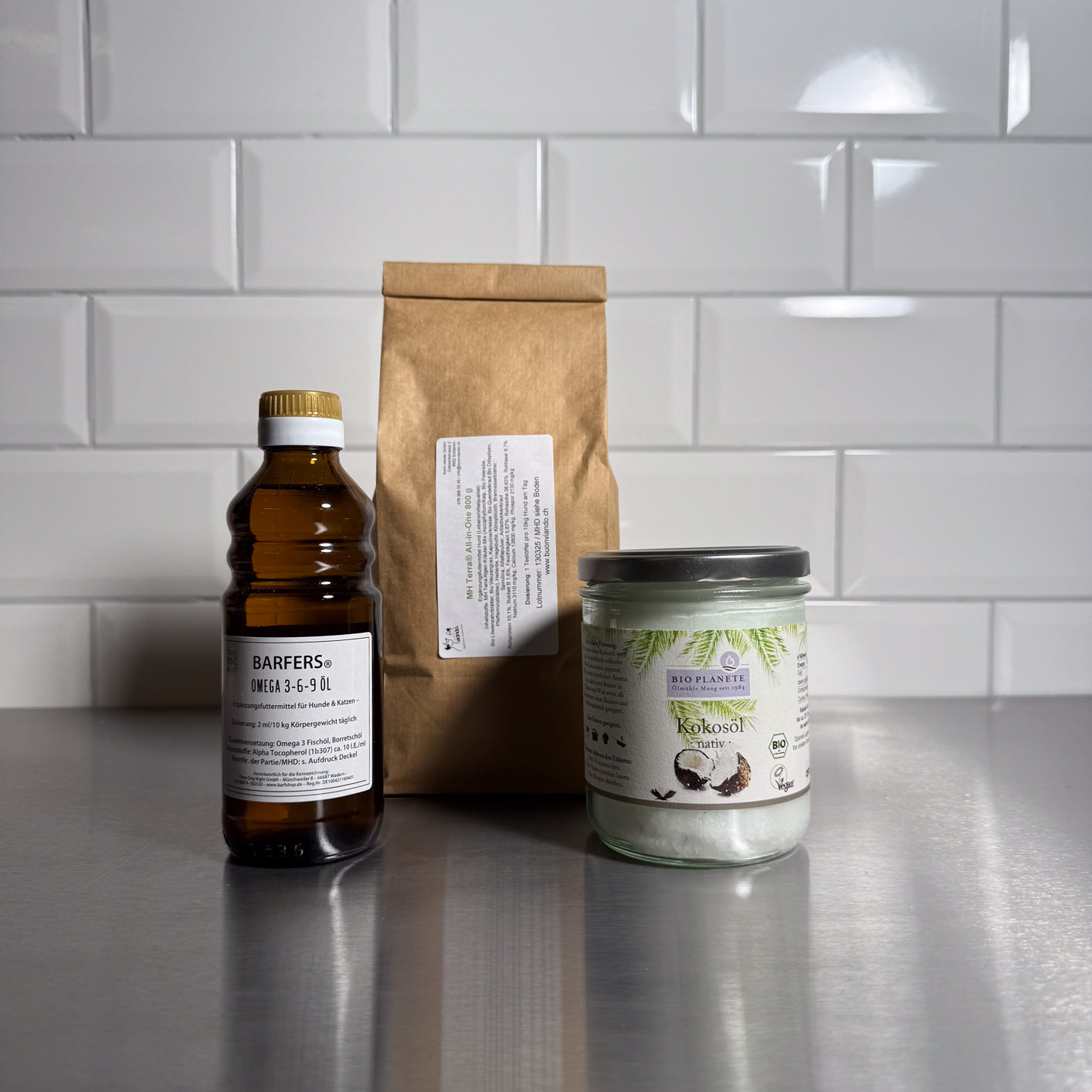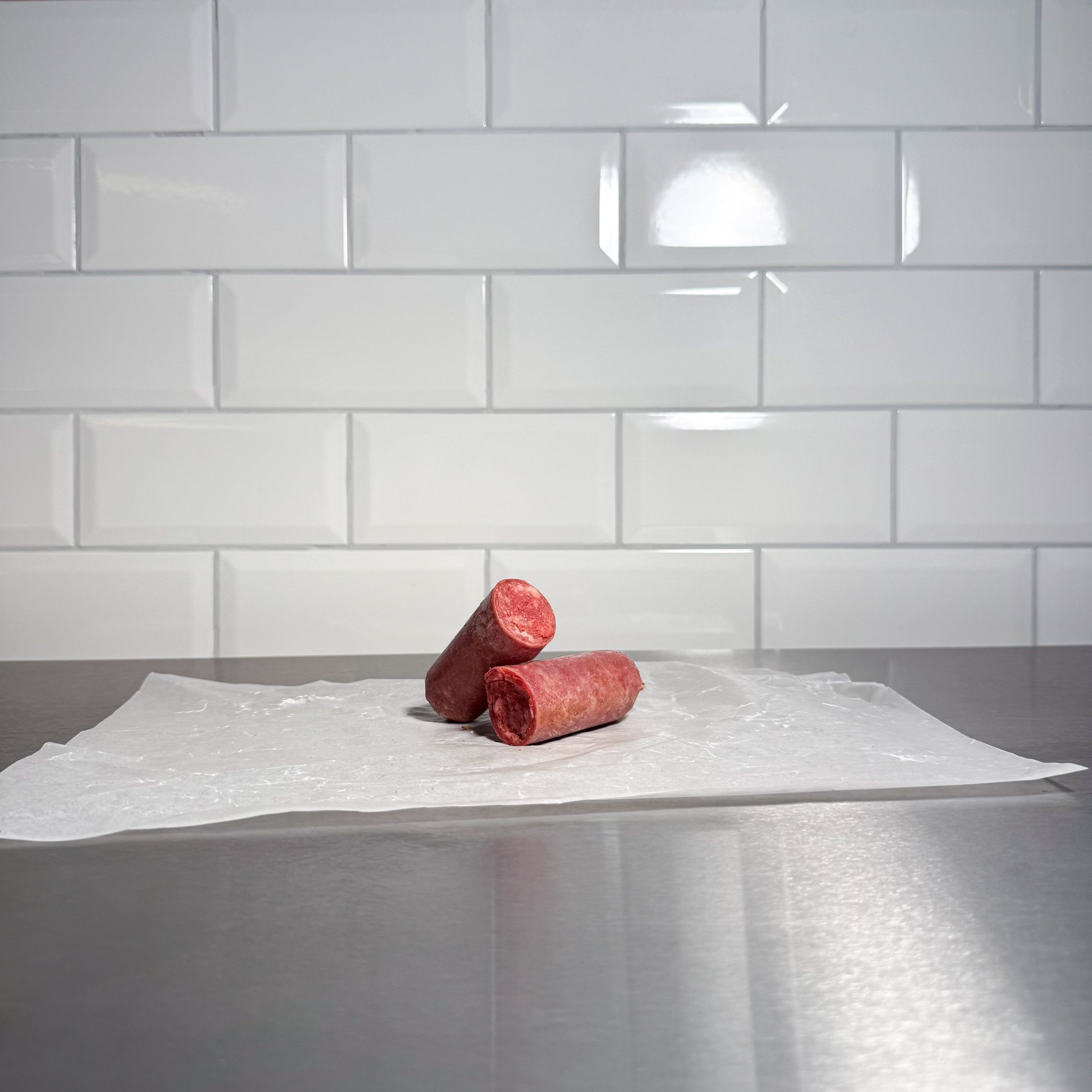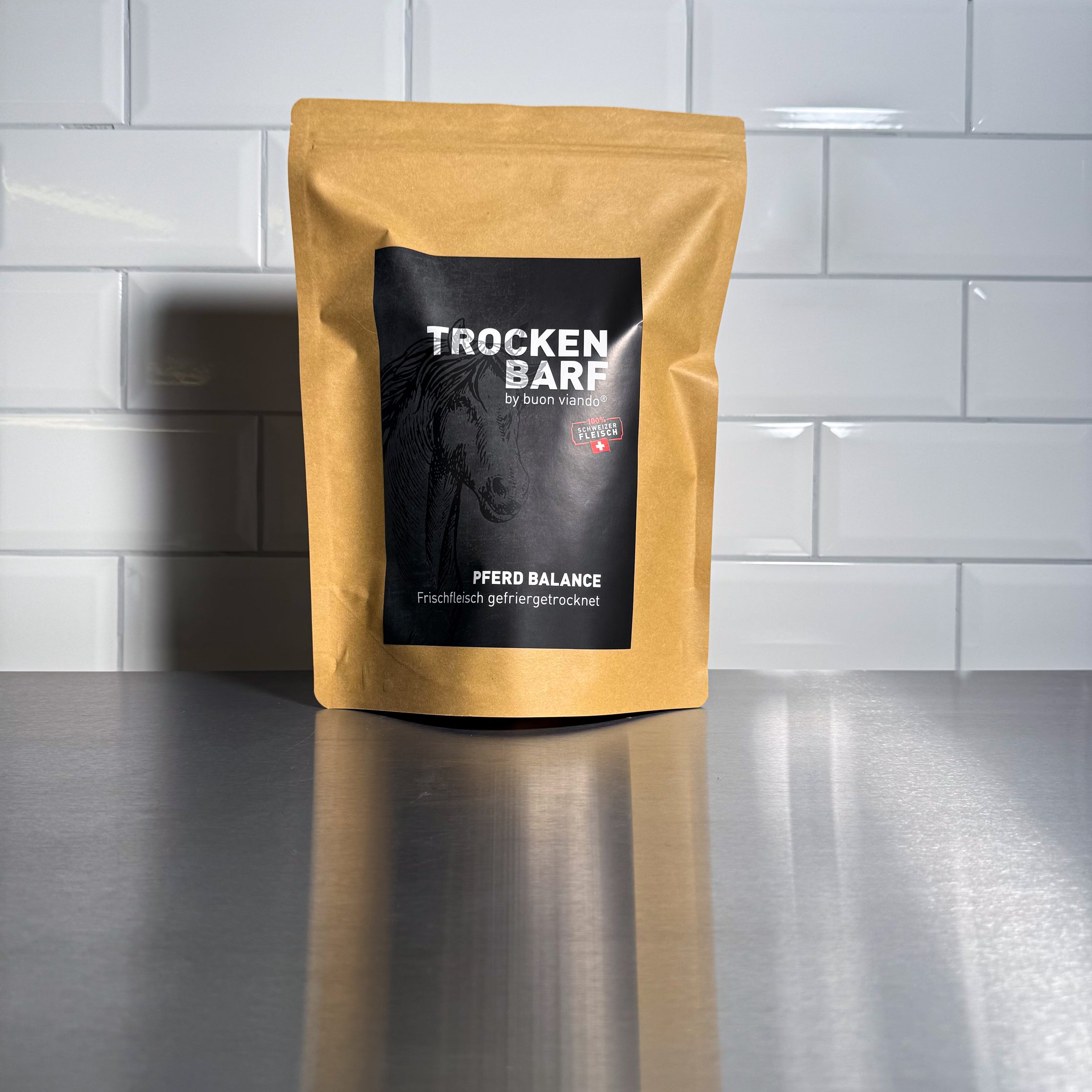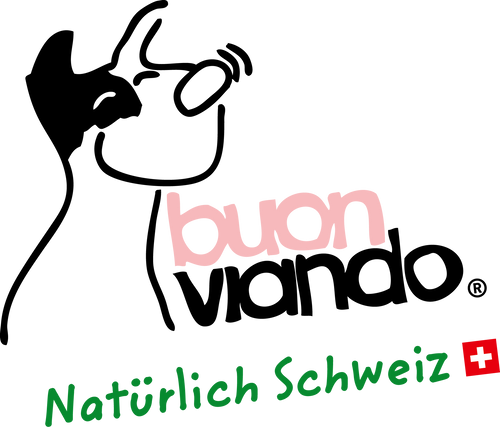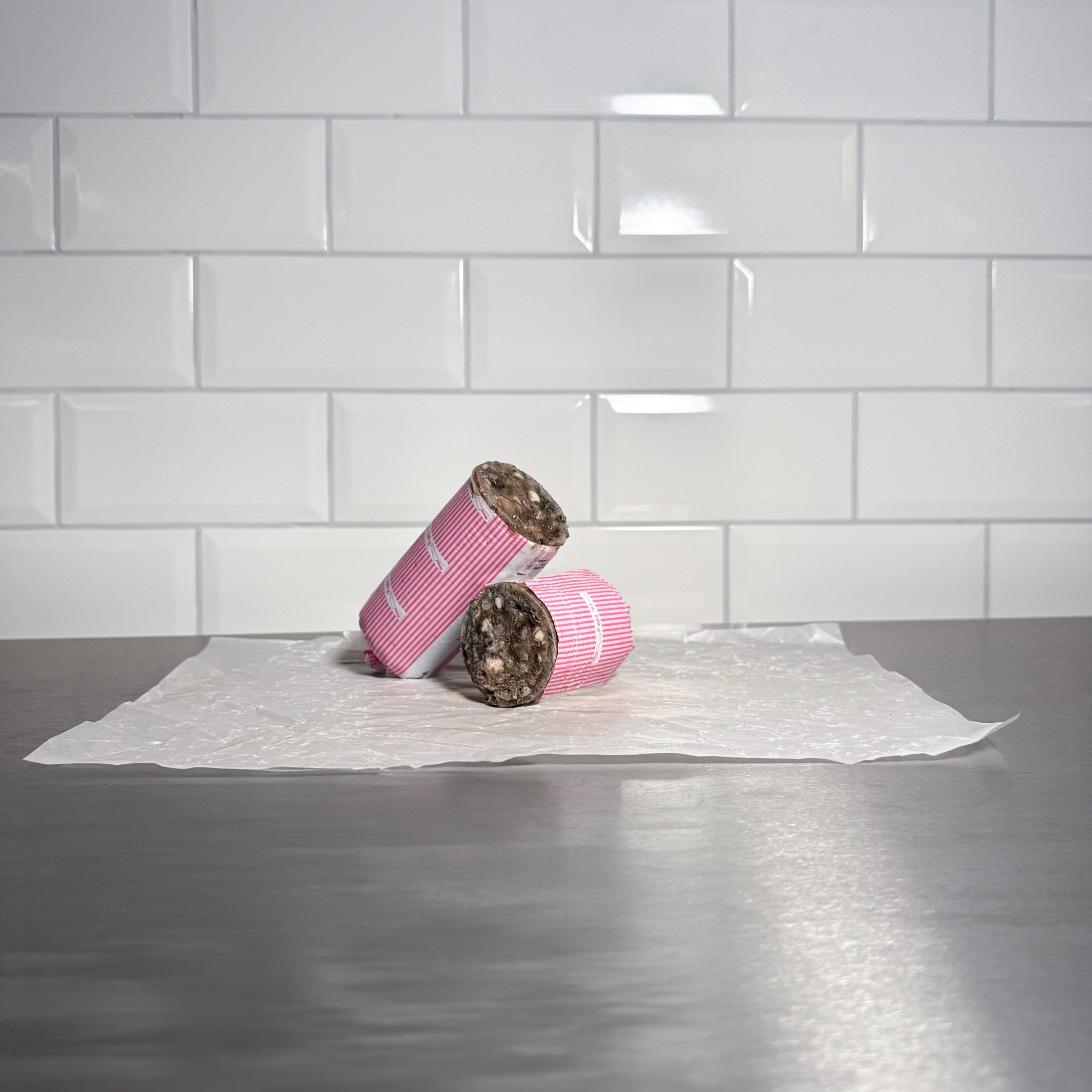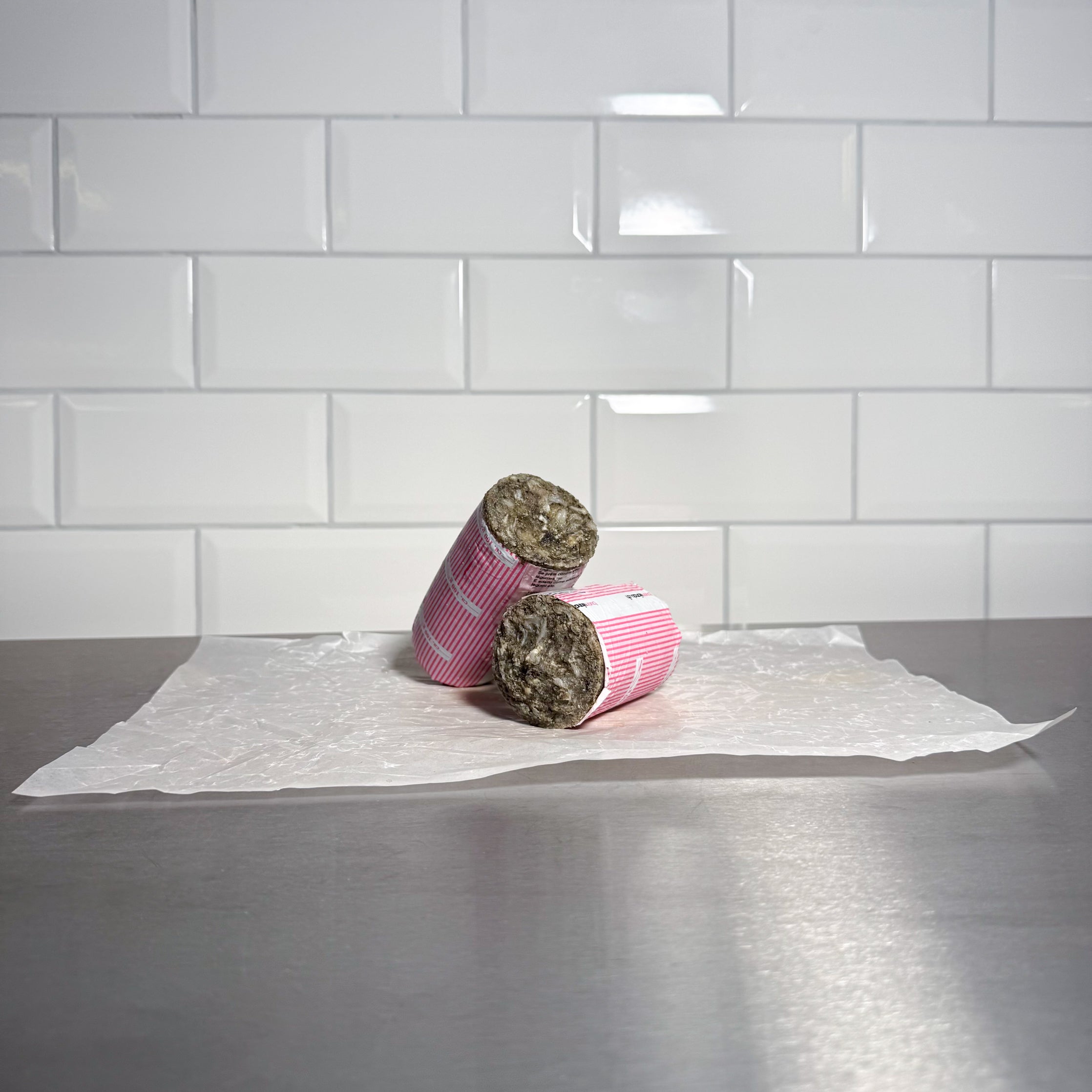What are rumen and omasum?
The rumen and omasum are parts of the digestive system of ruminants such as cattle. The rumen is the largest of the four stomachs and primarily serves the microbial decomposition of plant food. The omasum, also called the omasum, follows the rumen and is responsible for further grinding and water absorption.
The Effects of Rumen and Omasum in Dog Food
Both stomachs are true nutritional bombs for dogs:
- Rumen: It is rich in pre-digested plant residues, enzymes, and probiotic cultures. These support the dog's intestinal flora and promote healthy digestion. Tripe also provides valuable proteins and vitamins.
- Oma stomach: It contains fewer plant residues than rumen, but is still nutrient-rich. Its mineral and trace element content, which contribute to the dog's overall health, is particularly noteworthy.
And yes – we'll tell you straight: It stinks. As soon as the tripe thaws, you know what's in your bowl. But this very "smell" also demonstrates how natural the whole thing is. What may be borderline unpleasant to our noses is a pure feast for many dogs.
How often should you feed tripe and omasum?
A good guideline is to include tripe or omasum in your dog's diet 2-3 times a week – ideally alternating with muscle meat, offal, etc. They should make up about 20% of the meat portion in the BARF ration.
Green (unwashed) tripe is particularly valuable because it still contains all of its natural nutrients.
Suitability for Cats
Cats are obligate carnivores, meaning they primarily require animal protein. While tripe and omasum offer many benefits for dogs, they are less suitable for cats. The high content of plant residues does not meet the natural nutritional needs of cats. For our furry friends, muscle meat, heart, and other meaty components are a better choice.
Conclusion
Tripe and omasum are excellent additions to a dog's diet and contribute significantly to their health. However, for cats, these offal should be avoided and other meat sources should be used instead. As always, quality and variety are the key to a species-appropriate and healthy diet for our four-legged friends.

